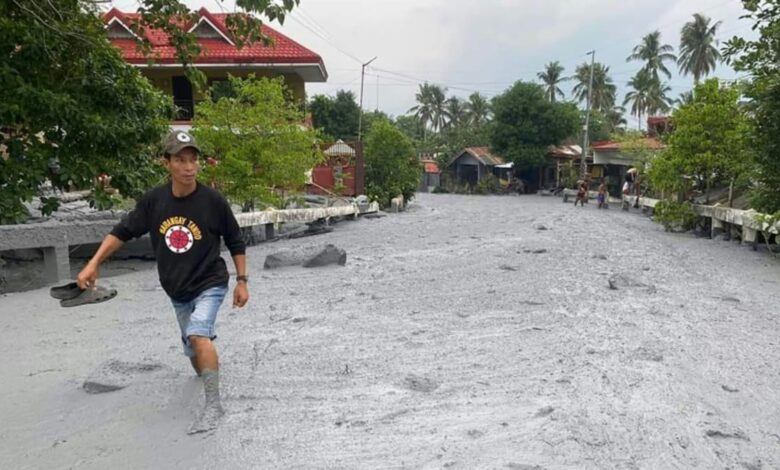Torrent of volcanic mudflow hits Philippine village

A bulldozer and three dump trucks were deployed to remove the lahar after it stopped flowing but Fernandez said it “might take time” to clear.
There were no immediate reports of casualties.
Lahars are mammoth flows of volcanic debris deposited on a volcano’s slopes and unleashed by heavy rain or snow melt. They can bury villages.
“We are still determining the extent and volume of the lahar,” said Teresito Bacolcol, director of the Philippine Institute of Volcanology and Seismology.
Bacolcol warned the public that lahar contained volcanic ash and was “dangerous”.
Leah Martinez, 37, filmed the stream of volcanic debris flowing down a rocky watercourse near her village of Masulog, which is also close to the volcano.
“Before the lahar flow, there was a thunder-like sound again,” Martinez told AFP.
“I rushed outside. It was so loud. I thought the volcano had erupted again,” she said.
“We couldn’t see anything at first, then there were large stones, ashes and water flowing down the river.”
It was not clear if other villages were affected or how many houses were damaged.
Hundreds of people have been evacuated from their homes around Mount Kanlaon due to falling ash, gases and the threat of lahars.
The state volcanology agency has raised the alert level for the volcano from one to two on a zero-to-five scale, warning more explosive eruptions were possible.
The Philippines is located in the seismically active Pacific “Ring of Fire” that contains more than half the world’s volcanoes.
Kanlaon is one of 24 active volcanoes in the archipelago nation.





